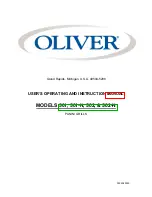
PAGE 9
Additional safety rules for chargers:
Before using the charger, read all instructions and cautionary markings on
the charger and battery pack as well as the instructions on using the battery
pack.
Only charge your batteries indoors as the charger is designed for indoor use
only.
DANGER.
If the battery pack is cracked or damaged in any way, do not use
it or try to charge it.
There is a danger of electric shock or electrocution.
WARNING.
Do not allow any liquid to come into contact with the charger.
There is a danger of electric shock.
The charger and the battery packs supplied, are specifically designed to
work together. Do not attempt to charge the battery pack with another
charger.
Pull on the charger’s transformer to disconnect it from the power source. Do
not pull the lead.
Do not use the charger if it has been subjected to a heavy knock, dropped or
otherwise damaged in any way. Take the charger to an authorised service
centre
to check or repair it.
Do not disassemble the charger. Take it to an authorised service centre
when service or repair is required. Incorrect re-assembly may result in the
risk of
fire, electric shock or electrocution.
To reduce the risk of electric shock, unplug the charger from the power
supply before attempting to clean it. Removing the battery alone does not
reduce
the risk.
This charger can only be used for charging 12V 1
3
00mAh
Li-Power
battery
pack supplied (
3
x
3.7
V
Li
1
3
00mAh battery cells) with this unit.
Do not recharge non-rechargeable batteries
During charging, batteries must be placed in a well ventilated area.
Additional safety rules for the battery pack:
The battery pack for this tool has been shipped in a low charge condition.
You should charge the battery pack fully before use.
Do not incinerate the battery pack. The battery pack can explode in a fire.
A small leakage of liquid from the battery pack may occur under extreme
usage or temperature conditions. This does not necessarily indicate that the
battery pack has failed. If the outer seal is broken and this fluid comes into
contact with your skin, wash the affected area quickly with soap and water. If
the
fluid gets in your eyes, flush your eyes with clean water for a minimum of
10
minutes and seek immediate medical attention. Inform the medical staff
that the
liquid is a 25-35% solution of potassium hydroxide.



































